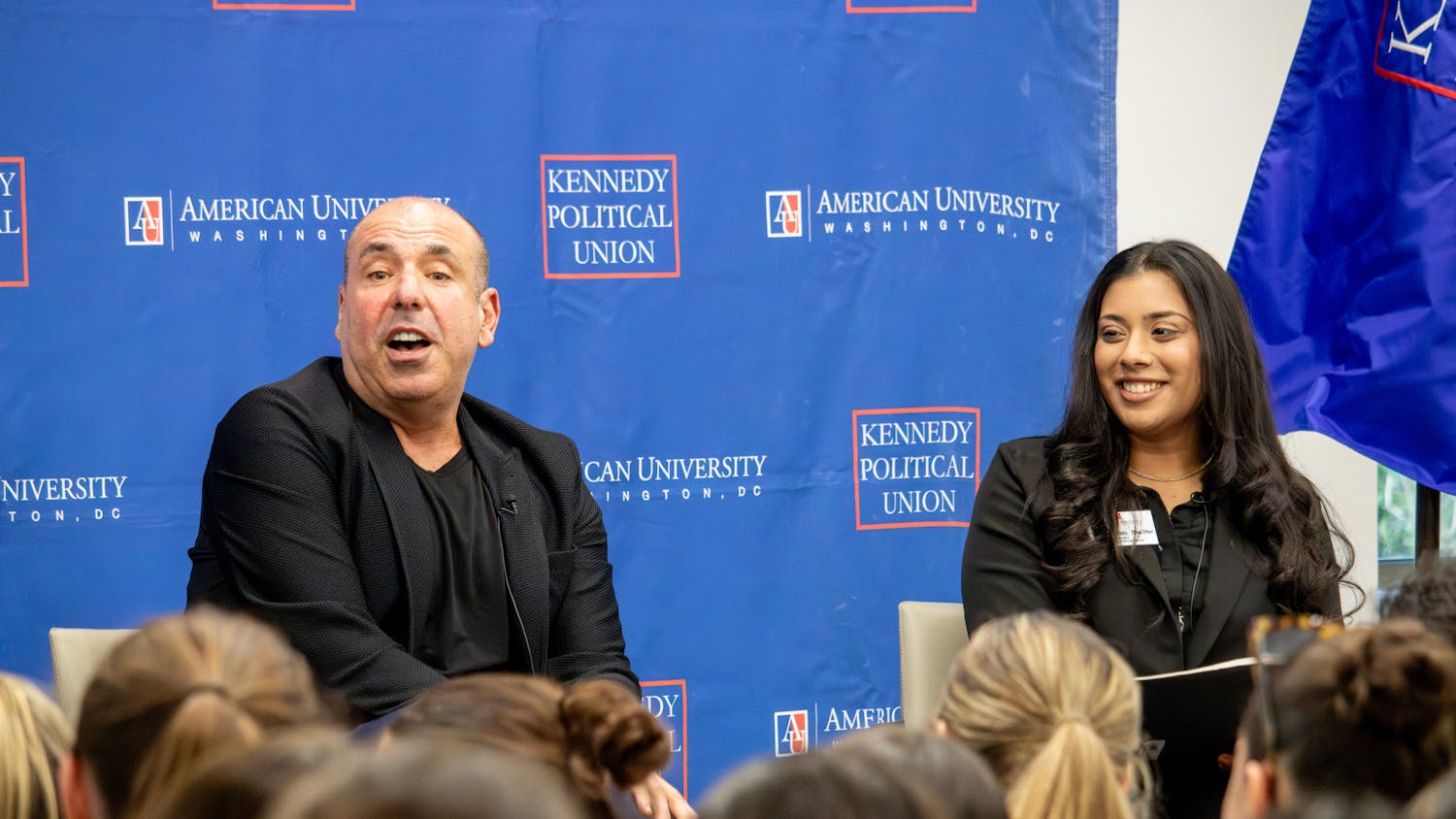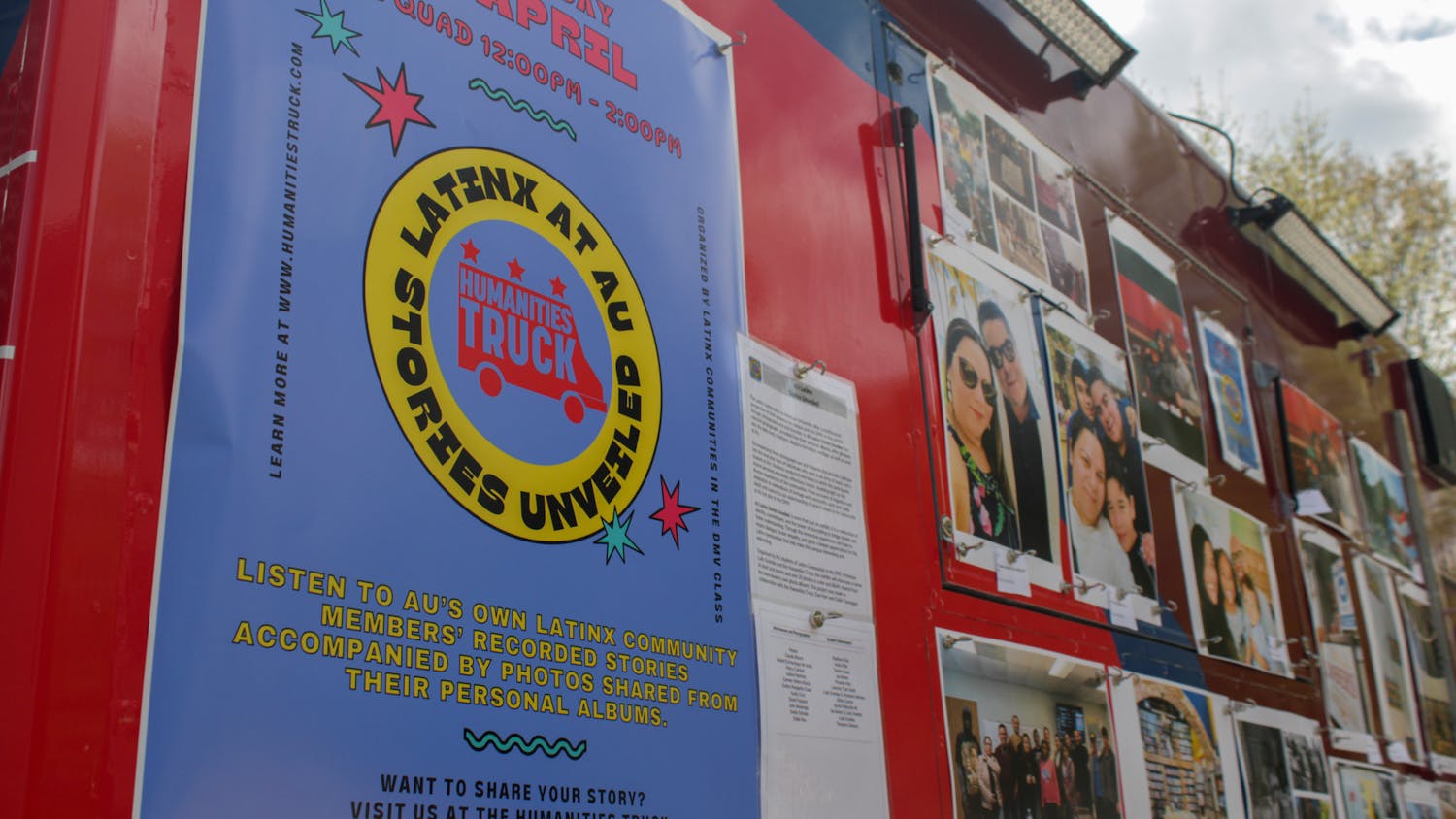The School of Public Affairs hosted Olympic gold medalist Tommie Smith and American conceptualist artist Glenn Kaino at Constitution Hall on Nov. 6 to talk to students about their upcoming movie “With Drawn Arms,” which tells the story of Smith’s protest of the unfair treatment of African-Americans during the 1968 Olympics.
Smith went to the 1968 Summer Olympics in Mexico City and won the gold medal in the 200 meter sprint. He finished the final in 19.83 seconds, making him the first person ever to break the twenty second barrier. During the ceremony, Smith, along with bronze medalist John Carlos, raised a single gloved fist during the national anthem to make a statement about the unfair treatment of black Americans.
As a result, the Olympic committee stripped him of his title on the grounds that silent protests had no place on the Olympic stage.
“It was my divine right. It was something I had to do,” Smith said.
During the event, Smith and Kaino held a discussion with students and staff moderated by CNN commentator Symone Sanders. Smith and Kaino talked about their partnership, Smith’s own interpretations about his historic gesture, and the photo of Smith and Carlos’ protest as it relates to today’s political climate.
Kaino spoke first about their collaboration and how it all stemmed from a photo on his vision board. He had the photo of Smith and Carlos taped to his iMac and one of his colleagues offered to set up a meeting between the two. The initial meeting began with a creation of a single sculpture of Smith’s famous fist but expanded into the creation of “Bridge.”
“Bridge” is a piece of art created by Kaino that includes 32 gold-painted fiberglass casts of Smith’s arm suspended from cables. The sculpture was unveiled at Chicago’s Navy Pier from Sept. 19 to Sept. 22. Months later, Kaino and Smith decided to make a movie.
“I made an observation that Tommie and Delois [Smith’s wife] are living in kind of a time bubble: I was born after the event so the photo and the fist is highly symbolic,” Kaino said. “But to you, it is highly personal. And to the world, everyone knows the photo and the hand.”
But, Kaino said, there is a “huge” disparity between how history sees the protest and Smith’s memory of it.
“I wanted to find the gap and create something that functions in the now,” Kaino said. “Something that would re-engage the story.”
For much of the discussion, Smith talked to students and staff about his life story and what led up to his decision to take part in the silent protest.
At the time of the Olympics, Smith was a junior at San Jose State University and only 24 years old. He was entirely focused on school, but he joined the Olympic Project for Human Rights (OPHR).
His interest in the organization stemmed from his childhood. Growing up, he picked cotton and grapes with his father in the fields in east Texas. Growing up poor made him acutely aware of the disparity at that time between the white and black communities in America, he said.
“I didn't want people to hurt like I had hurt in route to this,” Smith said. “This was going to be my innermost message. One that I didn't have to speak, just show.”
The hardest part, Smith said, was trying to figure out what to do. Smith said he knew he had to do something and knew what he was capable of doing on the track. But off the track, he didn't know what message to spread.
“I would run world records and go home bored,” Smith said. “What I needed was something to cherish. I needed something to bow to, to love. I knew it was going to be a sacrifice, but I didn't know at the time how much of a sacrifice it would be.”
Going into the final race, Smith was already at a disadvantage -- he had injured himself in the previous race and he didn't get to warm up like the other athletes. He didn't start out in first place and it looked for much of the race like he wouldn't even place in the top three. But at the last minute, Smith was able to take the gold.
“I had to win that race because if I didn't place, I wouldn't have the platform to do what I needed to do,” Smith said.
He walked out during the medal ceremony determined to do what he had come there to do. As he stood up on that podium while the national anthem played, Smith said he prayed to God that he wouldn't be hated for telling the truth.
It was his “cry for freedom,” he said. In that famous photo, his shoes were off, black socks, a single black glove, a black scarf, and his head cocked to the right, the single olive branch and left fist raised in the air.
“I saw this as my opportunity to give back and an opportunity to give all I had,” Smith said.
Smith explained the black socks stood for black poverty in America, the head cocked to the right was in respect for the Reserved Officer’s Training Corps (ROTC), and the flexed wrist was to show that he stood with cotton pickers everywhere. But most importantly, the single raised fist was to show that he was black and he was proud of it.
After he stepped off that podium, he heard the screams and the boos. On the way back to the “dungeon,” Smith said he did it again to show the audience that it wasn't a mistake and that he had zero regrets.
Smith related his story to today’s political climate. He talked about the resurgence of silent protests from ex-NFL quarterback Colin Kaepernick and other athletes. Smith strongly emphasized the importance of talking about big issues in order to resolve them for good.
“We tend to lay fault on others and not on ourselves. We sit on problems, let them brew, and when it starts to smell we get up and consult people around us,” Smith said. “If you just speak -- and don't be afraid to speak to someone who will cut you down because it will happen.”
“It is so difficult for mankind to come together because we don't introduce ourselves to a problem. We are the problem and it is kind of hard to introduce yourself to yourself.”





